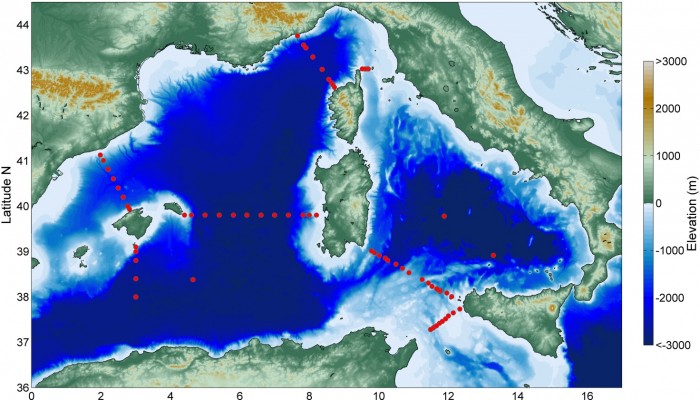
This week we feature the second instalment in this series, which follows the adventures of Simona Aracri, a PhD student at University of Southampton, and her colleagues. as they spent a month aboard a research vessel, cruising the Mediterranean Sea. Simona and the team of scientists aboard the boat documented their experiences via a blog. This time we discover that chemists are always kept busy on a ship and learn more about mega heatwaves! For more details on the research cruise and its aims, why not revisit the first chapter of the series?
10th August 2015 – Motion on the ocean and age-old rivalries
Having spent 4 days of non-stop sampling from depth profiles between Tunisia and Sicily, and Sicily and Sardinia, I for one was incredibly pleased when the ship held position off Sardinia last night to ride out some bad weather. Hitting your bunk for 12 hours sleep when you haven’t been in it for more than 1 hour at a time for 3 nights is an amazing feeling.
Choppy seas kept us just off Sardinia until an hour ago. As the weather has now improved again we are cruising to our first station in a transect from Sardinia to Menorca. So what do we do while we await our next sampling station? Well that depends on which ‘we’ you mean.
The chemists, busy as ever, are working on our instruments. Some of our instruments must be calibrated very regularly to keep the quality of data high. Keeping delicate instruments free from saltwater corrosion is also an ongoing battle in a ‘wet’ laboratory. A 6 hour break as we cruise to our first station is therefore a perfect time to clean and calibrate our instruments so that they are working perfectly when we arrive. Our students onboard can also catch up on the chemical titrations they are running. Every oxygen sample we take for manual measurement has to be titrated in the laboratory, so after 4 days of solid sample collection there is inevitably a big backlog of these titrations to run.
The marine biologists (who outnumber the chemists about 3:1), well I am not sure where they are or what they are doing… Maybe, to quote Rutherford, they are busy stamp collecting…Maybe they are in their bunks dreaming of being ‘promoted’ to marine chemists… Maybe they should blog themselves so you can find out…
Mark Hopwood, post-doc at GEOMAR, Germany (@Markinthelab and @OceanCertain)
11th August 2015 – The legacy of the mega heatwave
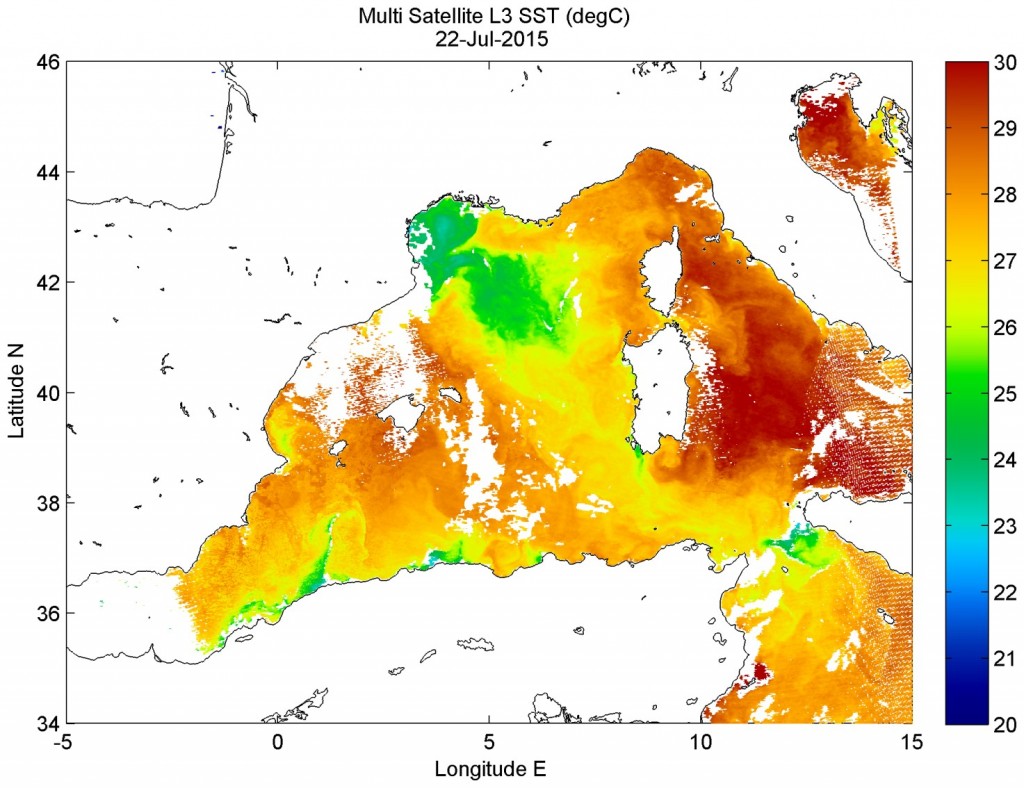
Night time SST in the Western Mediterranean on 22nd July 2015. Data courtesy of CMEMS.
Under the influence of warm air masses from the south, July 2015 was one of the hottest on record in southern Europe. Long-lasting periods of multiple heat events and temperature extremes represent a class of extreme weather events also known as Mega Heatwaves. Such events are predicted to increase in frequency in the Mediterranean region, a hot spot for climate change. What are the consequences of these events on the biological pump are yet to be elucidated. Our scientific crew on-board the R/V Minerva Uno is now sampling the response of the upper ocean of the western Mediterranean Sea to the recent mega heatwave, still ongoing although now weakened. Hopefully, the stunning work carried out will help sheding light on the role of environmental stressors associated to these meteorological conditions, such as excessive radiation and heating and increased stratification, on the functionality of the marine ecosystem. This, while the Mediterranean Sea is experiencing tropical-like temperatures, for several days close to or above 30°C in many spots. As the summer goes by approaching the cold season, the gentle, boiling and still Mediterranean Sea soon will become pure fuel, feeding remarkably different classes of extreme weather: flash floods, severe cyclogeneses and Mediterranean hurricanes.
Jacopo Chiggiato, Scientist at CNR-ISMAR
13th August 2015 – An alien from the deep
Accompanied with the sunset colours, zooplanktonists start the work. While the folks is in the labs, filtering more and more liters of water, we are so excited waiting what is coming from the sea, stolen from the deep blue. Our aim is to study the contribution of the zooplankton branch to the carbon flux in a pelagic environment and how the climate change can affect these fluxes and the zooplankton community of the Western Mediterranean Sea.
We perform several “net-casts” in the upper 500 m of the water column. We investigate the variety and abundance of the zooplankton community with classical methods (microscope analysis) and with innovative methods (metagenomics). We study trophic relations through the analysis of stable isotopes of carbon and nitrogen. We analyse the respiration rate of the entire community.
Here we are, curious to see what our net is bringing to us…
Marco Pansera, post-doc at CNR-ISMAR, and Anna Schroeder, master student at University of Hamburg.
16th August 2015 – The ocean is not enough
Not yet the end, but almost. Bad weather seems to have given us a break, the sea is sweetly pitching and rolling our ship, after a whole night that filled the dark sky with flashes, illuminating yellow-blue clouds. This morning everyone is finally sleeping, we finished tonight the sampling for this leg.
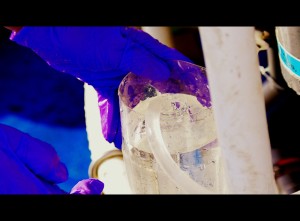
CFC sampling. Dissolved gases in the sea are very volatile, therefore the CFC sampling is the first one to happen when the rosette arrives on board. Credit: Sara Durante
White ones, red ones, yellow ones, colour codes help us to understand who samples what, and where in the water column: red stations are “just cast”, yellow station are biogeochemical ones, very few amounts of water for each depth, but a lot of parameters to sample, to study the behaviour of the carbon pump or the age of the deep waters…from CFCs to oxygen, from pH to nutrients and so on. You cannot be in a hurry, you have to wait your turn, CFCs and oxygen first, so…did you finish with this bottle? May I sample? The most complex ones are the white ones, the biological stations. Everyone needs water at every different depth, it seems that all the water in the sea is not enough for everyone! So close one more bottle for me please, and I will let you have my leftover water!
Around the rosette just serene people enjoying their work, everyone with a kind word or a smile for who is following in “milking” Niskin bottles. After the CTD rosette, the net. After the net, another CTD rosette. AS the sunset goes by entering the twilight, happy birthday to someone, goodnight to someone else, and good job for everybody!
Sara Durante, Ph.D. student at Parthenope University
By Simona Aracri, PhD student at University of Southampton and colleague aboard the R/V Minerva Uno

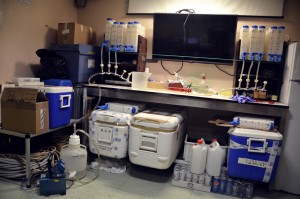
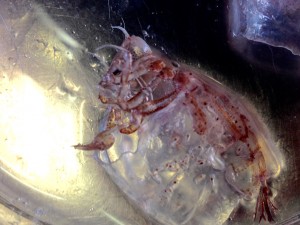
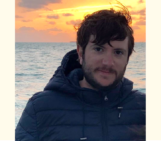
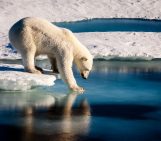
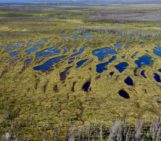
Jude Irwin
Your headline is ”
“Crusing the Mediterranean: a first-hand account of a month at sea – Part 2 ” Don’t you mean “Cruising”?? Or are Cruse missiles involved?
Laura Roberts-Artal
Jude,
You are absolutely right! Thank you for spotitng the typo. We’ve fixed it now.
Laura (EGU Communication Officer)
Pingback: GeoLog | Crusing the Mediterranean: a first-hand account of a month at sea – Part 3